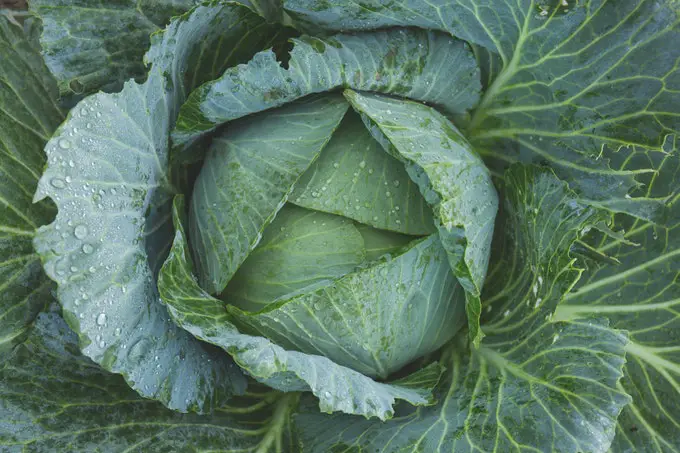As a mother, the time will come when the milk bar is having its Going Out Of Business Sale, and everything must go.
Although the intimate moments that breastfeeding provided you and your baby with will be sorely missed, reclaiming your boobs will be pretty exciting. Unfortunately, lactation suppression isn’t as easy as flipping the sign from Open to Closed.
Drying up your milk supply will happen, but won’t always be pretty or painless. There are lots of outdated and misguided methods that can hinder the drying-up process while further prolonging it, occasionally leading to health concerns.
Luckily, there is an equal number of herbs and other practical techniques that can ease you through the process of drying up your breast milk.
In this article:
How long will it take?
Alas, there is no definitive answer to this question. It can depend on a number of factors, including how long you have breastfed, and with what daily frequency.
By tapering off the feeding or pumping sessions, many mothers, even those who began the process with a full supply, will find it possible to go without expressing any milk within two to three weeks.1https://www.breastfeedingbasics.com/articles/lactation-suppression
Related: Breastfeeding vs Pumping (Pros & Cons)
Can lactation suppression cause health problems?
You might notice your magnificent milk-makers acquiring a lumpy or hard texture as your supply dries up. Pain and/or an uncomfortable sensation of engorgement is also a common complaint among mothers, especially with those who’ve opted to go cold turkey (not something I personally recommend doing).
There is the possibility of slightly more worrying side effects, such as:
- Clogged duct(s);
- Fever;
- Mastitis.
If you begin feeling as though you have the flu, or notice excessive swelling or red streaks on your breasts, it’s probably time to call the doctor; you might need a round of antibiotics to get back to feeling your best.2How Do I Wean My Baby?
llli.org/breastfeeding-info/weaning-how-to/
Related: Which cold remedies are safe while breastfeeding?
Practical techniques for drying up breast milk
Going through the drying up process is not something you need (or should) do cold turkey, nor do you need to suffer through each moment without relief. Here are some simple, practical ways to help you on your journey:
Taper down technique
While it can be tempting to just be done with all things breast milk-related, you’ll experience a significant improvement in your life if you take the slow road.
- If you breastfeed — Gradually reduce your child’s breastfeeding sessions by eliminating one breast milk meal, preferably one where she seems to suckle the least amount from you. Continue this over the course of several weeks, giving your baby (and yourself) a few days to adjust to each change. Before you know it, your body will naturally figure out that the time has come to turn off the milk taps.3Nine tips for weaning an infant onto solids 4medicalnewstoday.com/articles/318513
- If You Pump — Begin to spread your pumping further out over the day. So, instead of pumping every three hours, do so every four hours, gradually increasing the time between each session. During these sessions, gradually reduce the amount of milk you express. Be sure to do this gradually, cutting back an ounce or two at a time. Like the breastfeeding taper technique, pumping and expressing less will signal your body to stop producing milk in the (I promise!) near future.5Kochenour, N. K. (1980). Lactation suppression.Clinical obstetrics and gynecology, 23(4), 1045-1059.
- breastfeedingbasics.com
Related: Does smoking weed while breastfeeding harm my baby?
Avoid touching your breasts
Remember: there is no off switch on your boobs; as far as your body is concerned, if your nipples are consistently being stimulated, you have a baby that needs feeding.
While the taper-off technique works as you steadily decrease the stimulation of your breasts, you’ll also have to lose some everyday habits that can add extra activity around your bust.
While it’s impossible to lock your breasts in a drawer while you go through the drying out process, try to avoid:
- Allowing the shower stream hit you directly in the chest (warm or hot water can trigger your let-down reflex);
- Too much breast-play in the bedroom;
- Over-expressing to relieve engorgement.
Note that the last bullet point said ‘over-expressing.’ There’s nothing wrong with occasionally expressing a small amount of milk to help with engorgement. Just remember; you want to slightly soften your breasts, not empty them.6How Can I Dry Up Breast Milk Faster?
hellomotherhood.com/article/185943-how-can-i-dry-up-breast-milk-faster/ 7Kochenour, N. K. (1980). Lactation suppression.
Clinical obstetrics and gynecology, 23(4), 1045-1059.
breastfeedingbasics.co
Related: Itchy Breasts While Nursing (what, why, and how to fix it)

Invest in good bras
You’ll want a bra that offers plenty of support but is not overly tight. Feel free to wear your bra to bed during the drying-up period; every bit of comfort helps!
“A non-binding agreement”
While breast binding was once considered a great way to dry up breast milk, it is now known to cause more harm than good. We’re talking about a much bigger chance of clogged ducts or even mastitis, so let’s consign this old wives’ tale to the past.8How Can I Dry Up Breast Milk Faster?
hellomotherhood.com/article/185943-how-can-i-dry-up-breast-milk-faster/
Ice, Ice, Boobies
The ever-dependable icepack will work wonders for reducing swelling and alleviating some of the pain that accompanies engorgement. Sure, it won’t directly dry up your milk supply, but hey, a little comfort sure goes a long way with this whole motherhood thing.
Personally, I prefer a bag of frozen peas (though feel free to use whichever chilled veggie you prefer!) for the simple fact that it molds to my body easier than a traditional icepack.
Related: Using a Pacifier While Breastfeeding (Truth Bomb!)
All-natural aides for drying up breast milk
Mother nature knows the score and has provided her fellow moms with plenty of all-natural helping hands.
 Sage
Sage
Whether you like it brewed in tea or boiled in broth, sage has long been known to help mums reduce their milk supply. This is due to the estrogenic effect it can have on women.
The only caveat is that it must be ingested; steer clear of essential oils or lotions when attempting to decrease your breast milk supply.9Navajo Herbal Remedies
healthfully.com/440145-navajo-herbal-remedies.html
 Cabbage compresses
Cabbage compresses
And to think, as kids, we used to turn green at the thought of cabbage. Who knew it would end up becoming an integral part of our lactation suppression efforts?
This one is simple:
- Rinse and dry some leaves from a plain green cabbage.
- Chill them in the fridge or freezer.
- Separate the leaves, scoring or gently pounding them so that their juices flow (you want these juices to come out on your breasts).
- Wrap your breasts in the leaves. Line your bra with them if that makes life easier, leaving your nipples cabbage-free.
- Leave in place for twenty to thirty minutes, or until wilted.
- Repeat up to three times a day.
- Vow to never sully the good name of cabbage again.10Drying Up Your Milk When It’s Time to Wean 11premierhealth.com/your-health/articles/women-wisdom-wellness-/Drying-Up-Your-Milk-When-It-s-Time-to-Wean/?HealthTopicTaxonomyID=21828
 Jasmine leaves
Jasmine leaves
For a little extra ‘drying up’ power, consider lining your bra cups with jasmine leaves. While still under scientific investigation, there is evidence that jasmine can help speed up the lactation suppression process.J12asmine use while Breastfeeding
https://www.drugs.com/breastfeeding/jasmine.html
Editor’s Note:
Consider the age and abilities of your baby and make sure you are taking the appropriate measures to get them the hydration and calories they need when breastfeeding is coming to an end. Toddlers older than a year just need a balanced diet from a variety of foods and won’t need any calorie replacement once breastfeeding is over. Water is best to keep them hydrated but cow’s milk and other fluids can be given in moderation if desired. Babies less than a year old will still need pumped breast milk or formula to account for some of their calories each day. 24-30 oz per day is recommended. Talk to your pediatrician for specific recommendations on what they might need moving forward.
Related: 5 Go-To Recipes for Breastfeeding Moms
The do’s and don’ts of drying up breast milk
DO
- Gradually taper down pumping and/or breastfeeding;
- Stay hydrated;
- Keep your salt intake low to avoid extra fluid retention;
- Occasionally express small amounts of milk for comfort;
- Add sage to your diet;
- Utilize cabbage compresses;
- Use icepacks;
- Wear supportive bras; jasmine leaves optional.
DON’T
- Stop breastfeeding or pumping ‘cold turkey’;
- Bind your breasts;
- Cut your water intake;
- Allow your breasts to become overstimulated during day to day activities
Expert tip: Recognize that this process is a change for both you and your baby and that you sometimes need to modify the pace and method of weaning for your child. Increased tantrums, clinginess, acting out, separation anxiety, and other unusual behaviors from your child may indicate they are struggling with the process of weaning. Slow down the pace of weaning if possible, and talk to your pediatrician about how to help your child through this process, while providing other comforts to replace the breast.
Wrapping up
Now that the time has come for you to stop breastfeeding, we hope the above tips will help with your journey of transition. Hey, every breastfeeding mother has been there; this is a delicate time fraught with mixed feelings and breast engorgement. Never a fun place to be.
Take good care of your health so that you can take care of your baby. If you ever find yourself struggling, physically or mentally, don’t hesitate to reach out to your doctor or lactation consultant. Change is hard but doesn’t need to be lonely.








